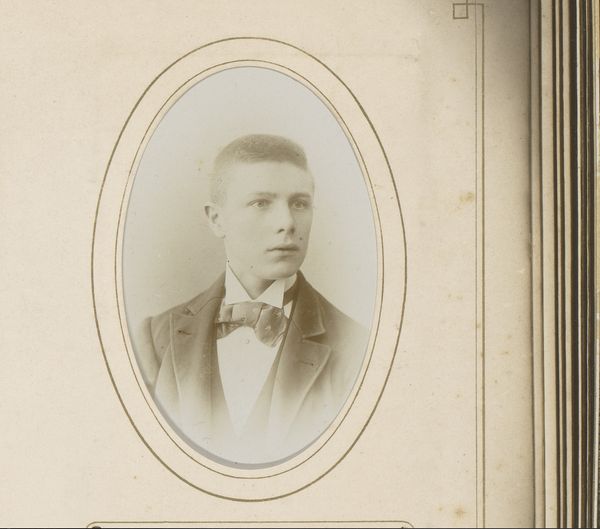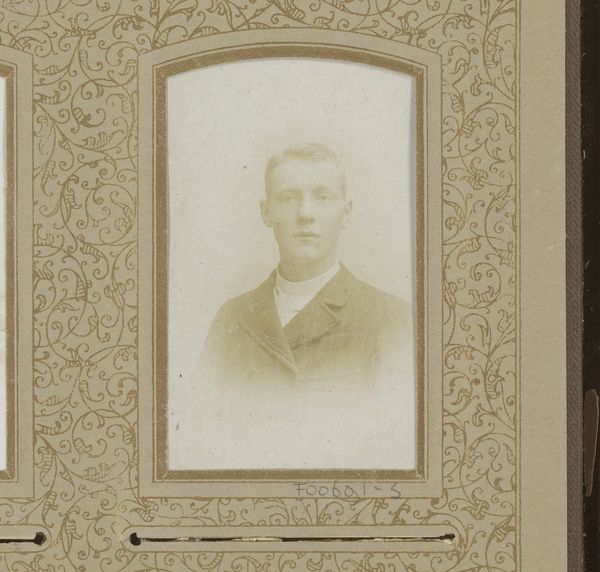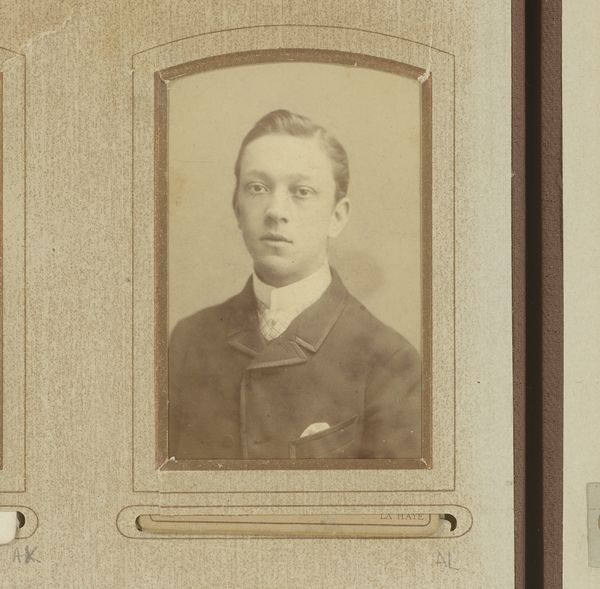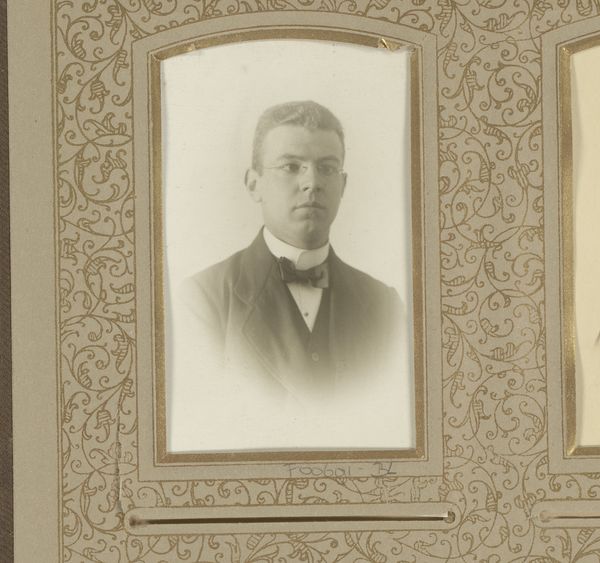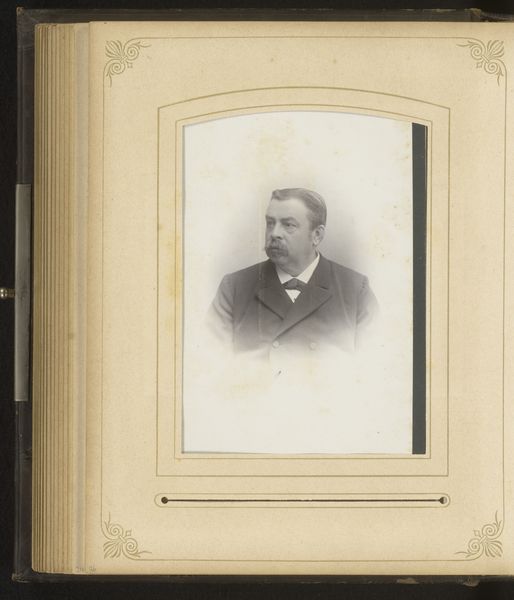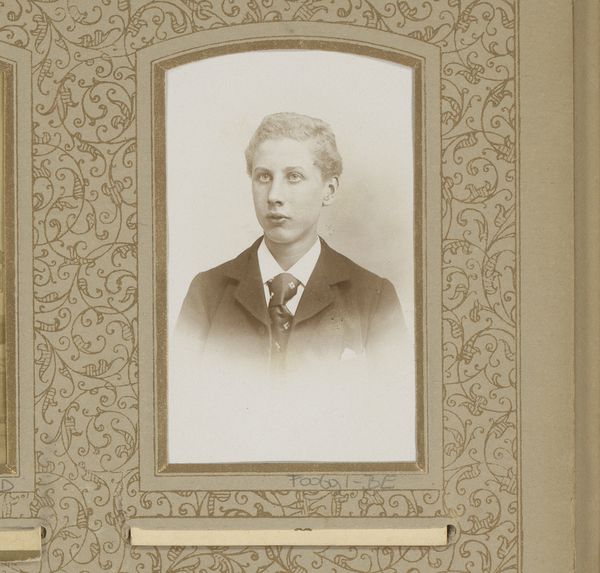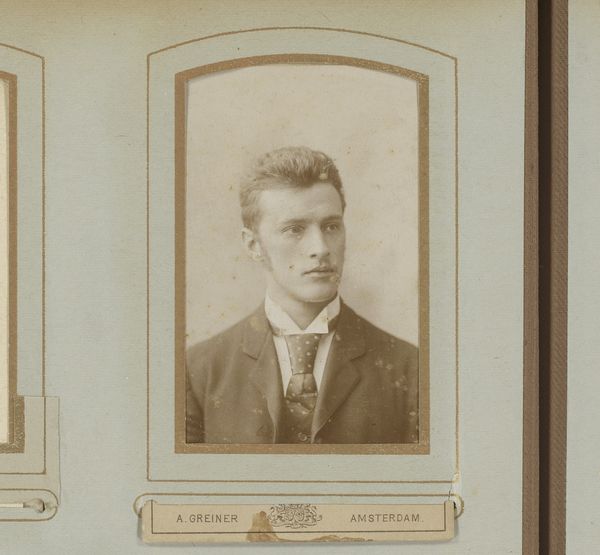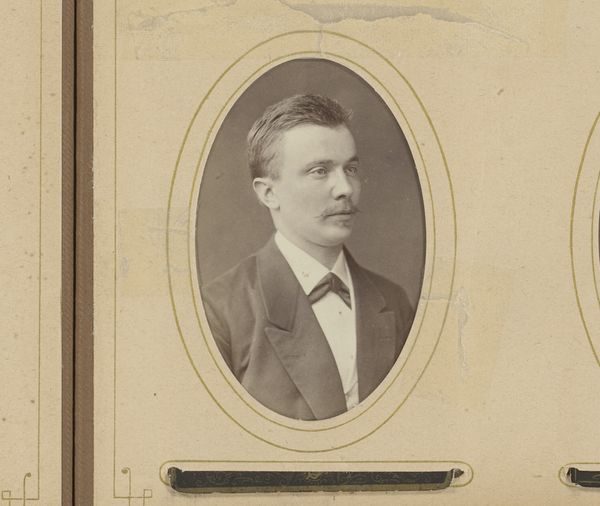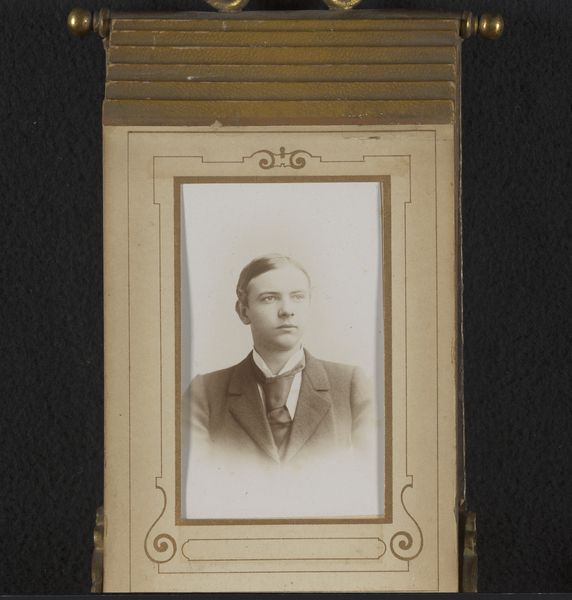
#
aged paper
#
toned paper
#
charcoal drawing
#
tea stained
#
brown and beige
#
earthy tone
#
coffee painting
#
warm-toned
#
neutral brown palette
#
watercolor
Dimensions: height 84 mm, width 51 mm
Copyright: Rijks Museum: Open Domain
Editor: Here we have "Portret van P. Hopman," dating from between 1900 and 1930. It’s unsigned, and done with watercolor. The tones are wonderfully warm, giving it a somewhat nostalgic feel. How do you read this piece? Curator: The sepia tones immediately draw my attention to the materiality of the image itself. The aging, likely intentional "tea-staining," transforms what might have been a straightforward portrait into a commentary on time and preservation. Think about what choices went into presenting this image. It's not just the artistry of rendering Hopman, but the conscious crafting of the object. Editor: So it's not just the subject of the portrait that’s important, but the materials? Curator: Precisely. Consider the paper, likely chosen for its absorbency and texture to enhance the watercolor effects. Then consider the methods used to manipulate the aging and present an illusion of antique beauty. The work itself, therefore, engages in the business of nostalgia – think of who might have commissioned, purchased, and displayed it at the time. Editor: That makes me rethink it completely. It’s less about the individual and more about how we choose to remember or idealize the past. Curator: Exactly. The ‘brown and beige’ palette, to quote one of our handy metadata tags, isn't merely aesthetic. It's a constructed visual language that whispers of bygone eras. What does this construction achieve, socially and culturally? Editor: I see it now; it's not a window into the past, but a manufactured artifact meant to evoke particular feelings about it. That adds a whole other layer of meaning. Curator: Indeed. Examining the artwork through this lens allows us to question not just the ‘what’ of the image, but also the ‘how’ and, most crucially, the ‘why’ behind its construction and presentation.
Comments
No comments
Be the first to comment and join the conversation on the ultimate creative platform.
